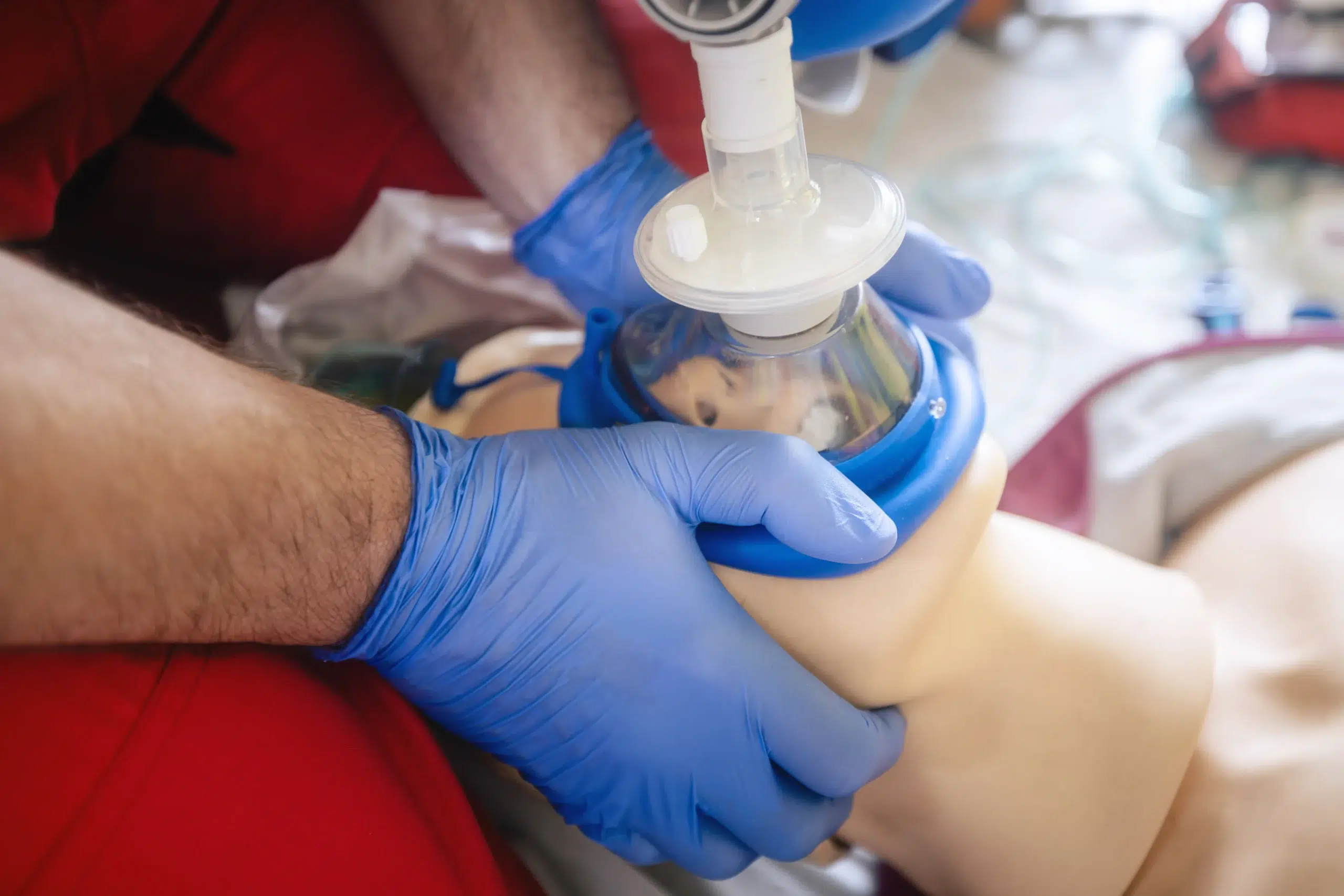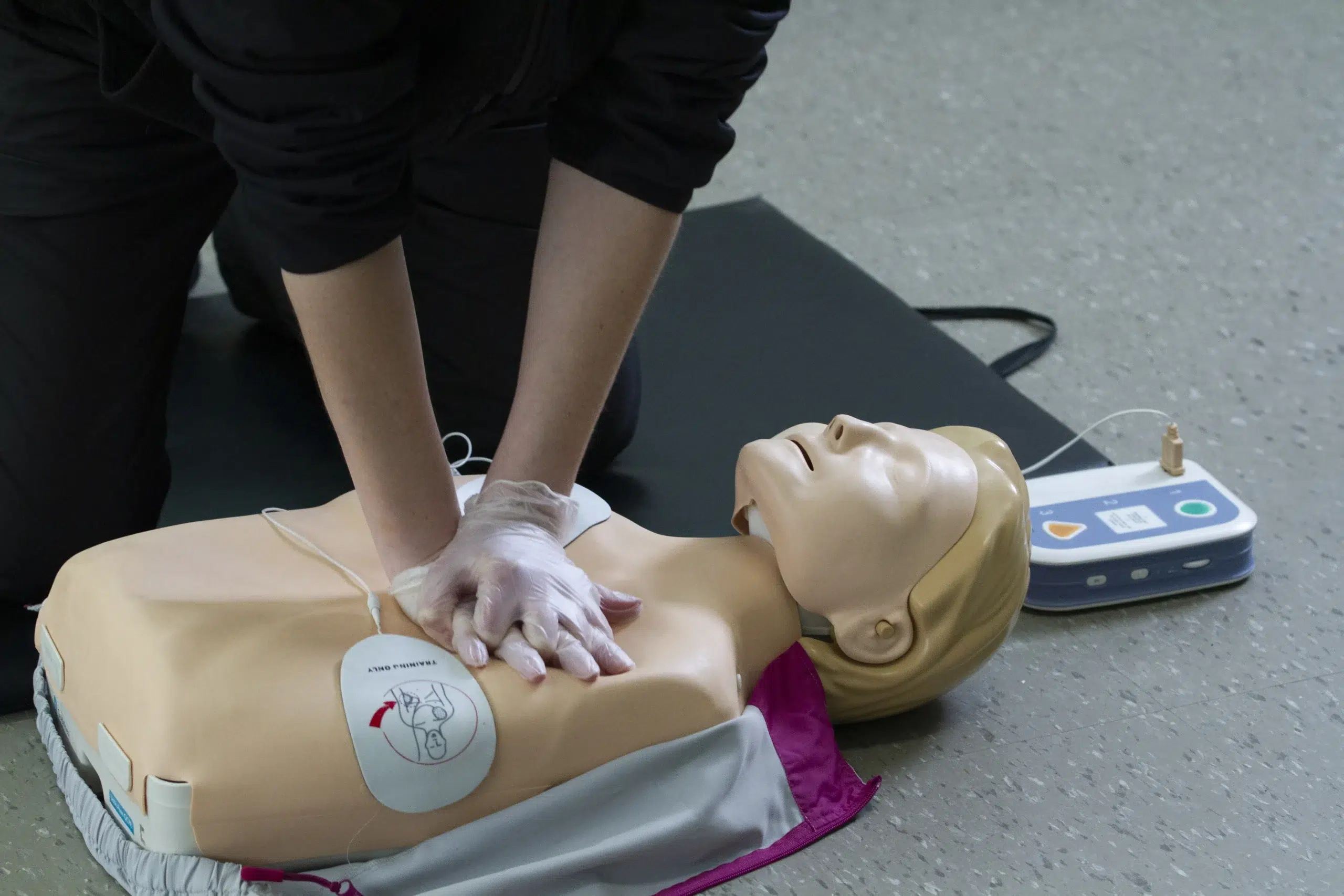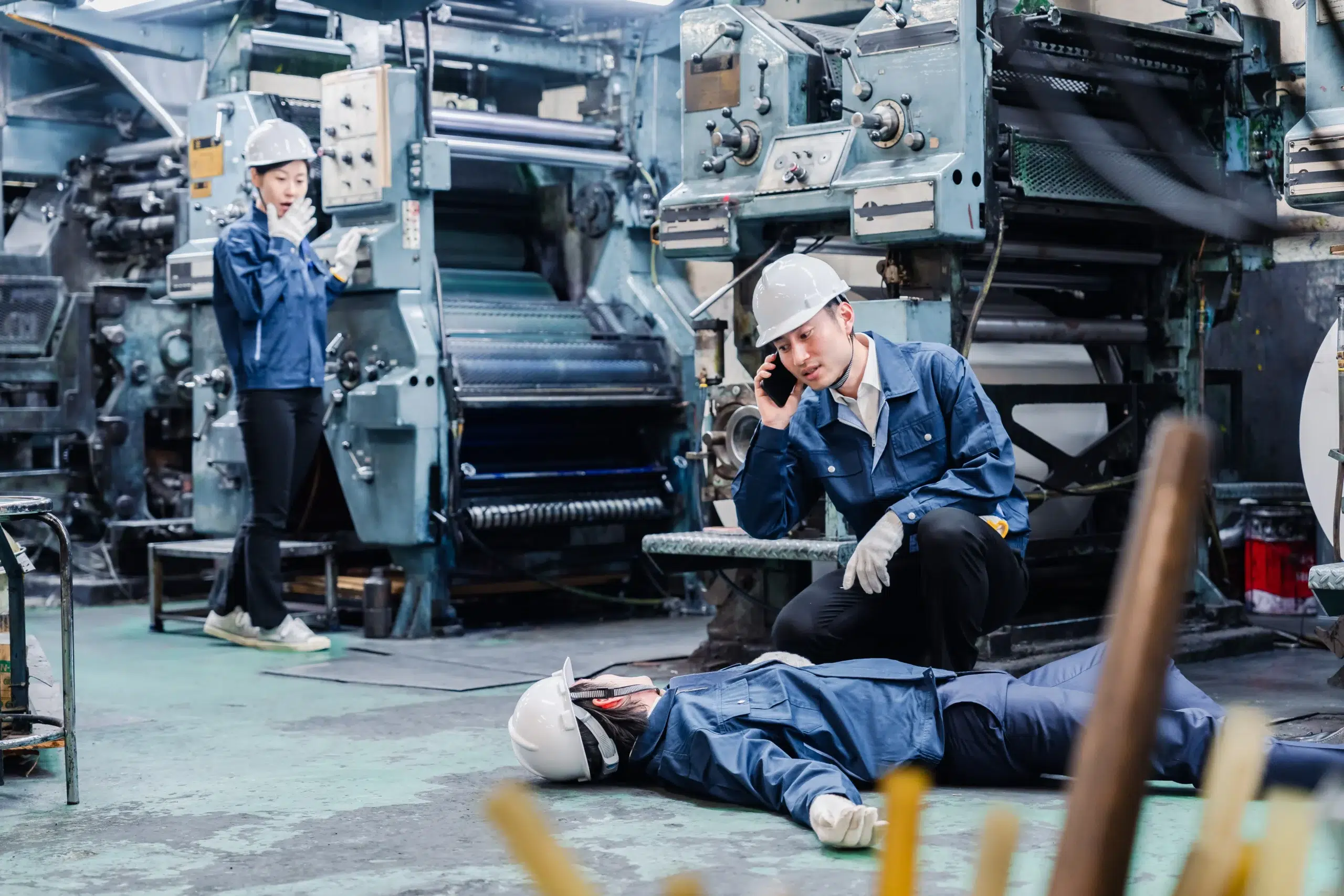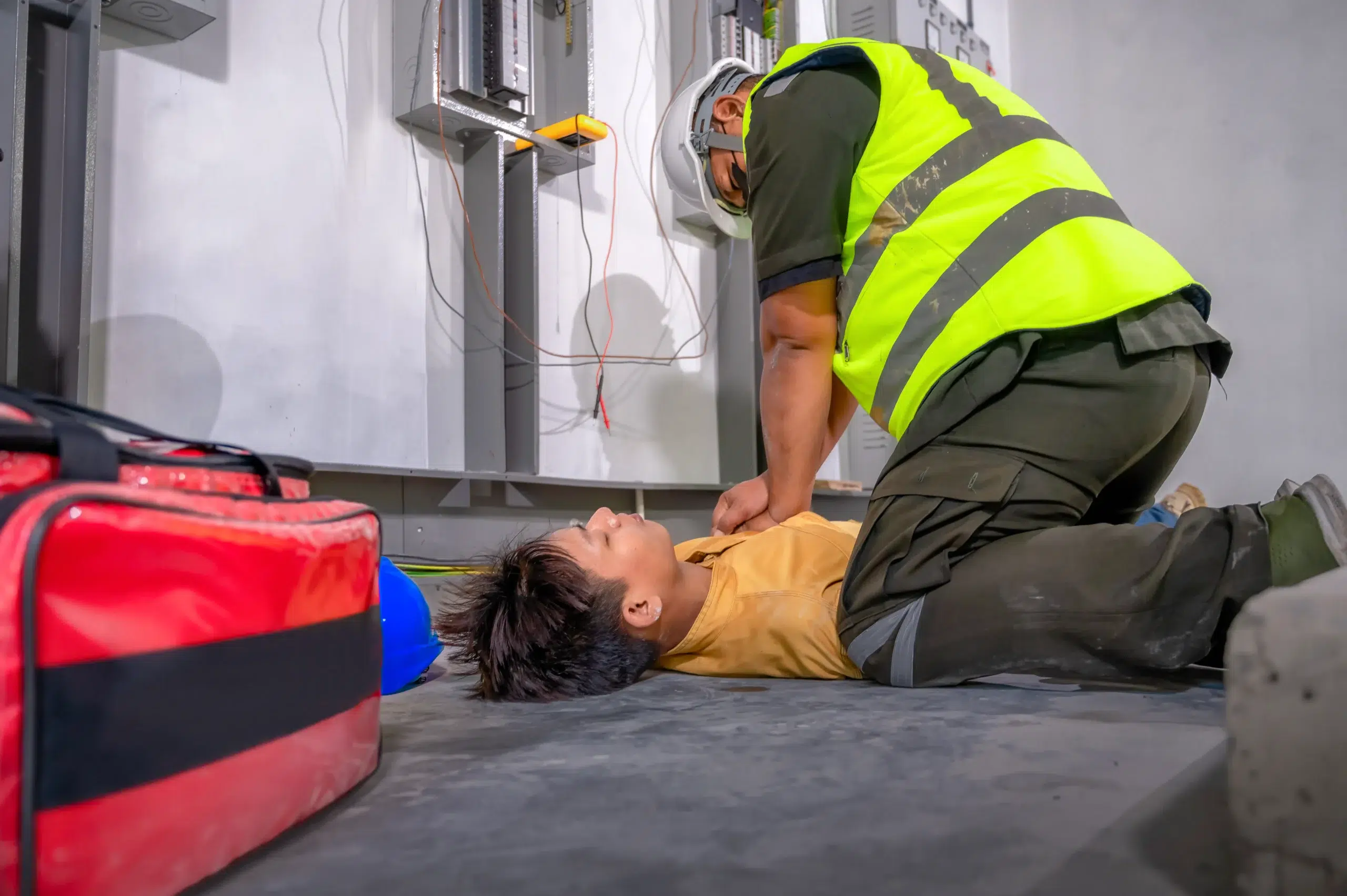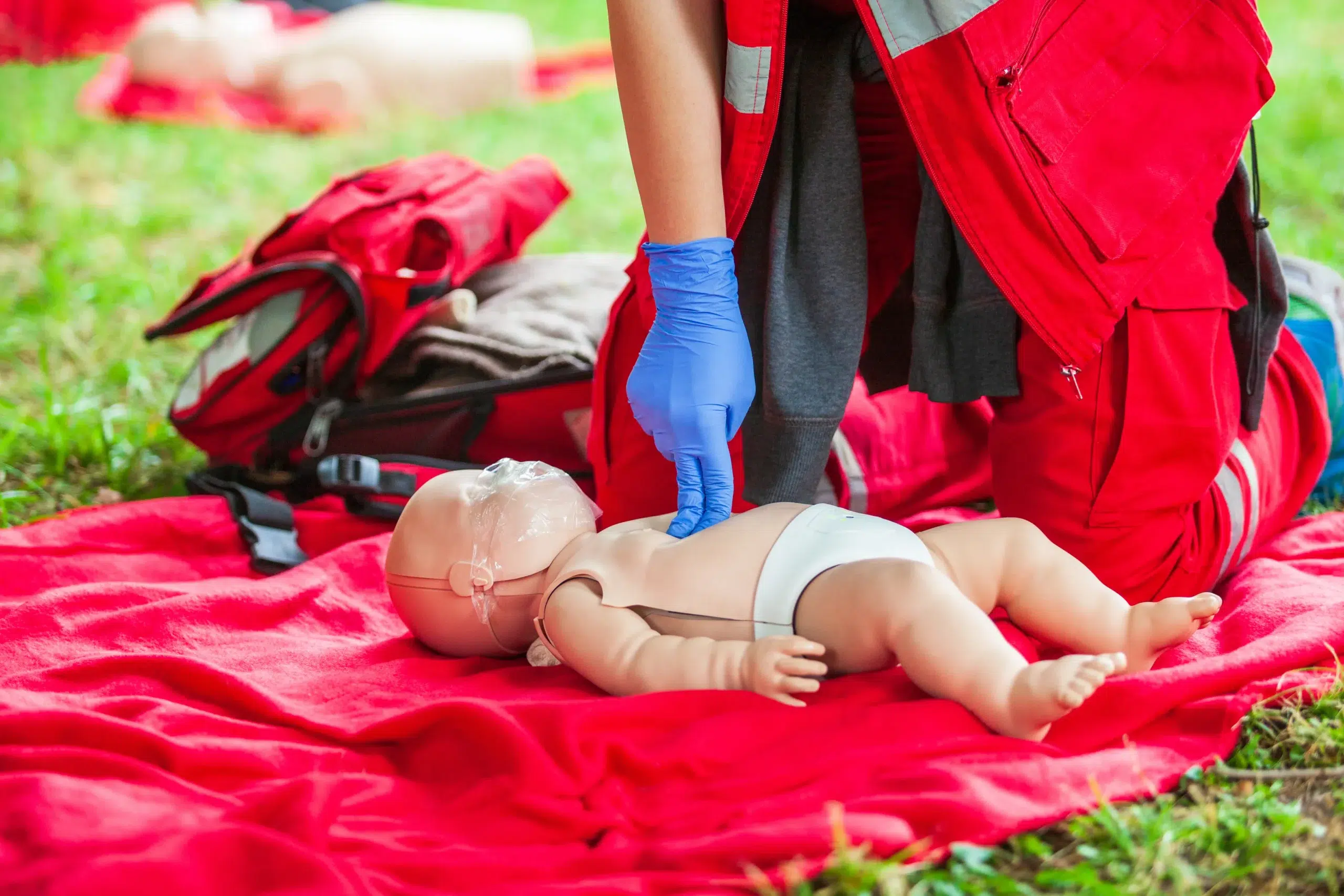Empower yourself with the skills to save a life. Basic Life Support (BLS) training equips you with the techniques to respond effectively in medical emergencies, providing immediate care until professional help arrives. This article demystifies BLS, explaining what it is, why it’s important, and how to find training near you. If you’ve been searching for “bls training near me,” we’ll guide you through the process of finding the right course, understanding different training formats, and navigating certification requirements. We’ll also highlight Danville CPR Classes, a woman-owned AHA Training Center offering a low price guarantee on BLS courses in over 60 cities.
Key Takeaways
- BLS skills are essential for everyone: From healthcare professionals to everyday people, knowing how to respond to medical emergencies can make a real difference. Find a BLS course that fits your needs and learn these vital skills.
- Finding the right BLS course is easy: Explore local training centers, online resources, and organizations like Danville CPR Classes to find a program that matches your schedule, learning style, and budget.
- Maintain your skills and stay certified: BLS certification typically requires renewal every two years. Keep your skills sharp and your certification current by taking a recertification course.
What is BLS Training & Why Do You Need It?
Knowing what to do in a medical emergency can make all the difference. Basic Life Support (BLS) training equips you with the skills to respond effectively in those critical moments. Let’s break down what BLS training involves and why it’s so important.
What is BLS?
BLS is a set of life-saving techniques used to provide immediate care to someone experiencing a life-threatening medical emergency, such as cardiac arrest, stroke, or choking. These techniques include CPR, giving rescue breaths, and using an automated external defibrillator (AED). It focuses on maintaining a person’s airway, breathing, and circulation until professional medical help arrives. For more information, check out our CPR and First Aid Certification courses.
Why is BLS Important in Emergencies?
In emergencies, seconds count. BLS training empowers you to take action while waiting for paramedics. The skills you learn can help maintain vital functions and potentially save a life. BLS certification courses cover essential techniques like CPR and AED use, giving you the confidence to respond effectively under pressure. Early intervention with BLS can significantly improve a person’s chances of survival and recovery. Learn more in our guide to BLS courses in Danville.
How Does BLS Benefit Healthcare Professionals and Everyone Else?
BLS certification is often a requirement for healthcare providers and students. It ensures they have the fundamental skills to handle emergencies in professional settings. But BLS training isn’t just for medical professionals. It’s valuable for anyone, including teachers, coaches, parents, and childcare providers. Knowing BLS can help you respond to emergencies at home, work, or in your community. Danville CPR Classes offers a variety of courses, making it easy to find the right training for your needs. Learning BLS can give you peace of mind, knowing you’re prepared to help in a crisis. For those in the healthcare field, explore our guide to BLS Certification in Danville.
Find BLS Training Near You
Finding the right BLS training program is easier than you think. Whether you’re a healthcare provider, a student, or someone who wants to be prepared for emergencies, there are plenty of options available. Here’s how to find a BLS course that fits your needs:
Where to Find Local BLS Classes
Start by searching for local training centers. Many hospitals, community colleges, and dedicated CPR training organizations offer BLS certification courses. A quick online search for “BLS classes near me” can uncover options in your area. Danville CPR Classes offers a range of AHA-certified courses, including BLS, ACLS, and PALS, ensuring your training aligns with your professional needs and expands your emergency response skills. We serve Danville, San Ramon, Dublin, and other nearby California cities.
Use Online Resources to Find BLS Training
The internet is a great tool for finding BLS training. The American Heart Association (AHA) website has a course locator to help you find certified training centers in your area. The AHA offers a BLS course designed for various individuals—healthcare providers and other personnel who need to know CPR and other basic cardiovascular life support skills. You can also research other organizations that offer BLS certification, such as the American Red Cross and the National Safety Council.
Danville CPR Classes: Your Go-To for Local BLS
Danville CPR Classes is your local resource for high-quality, affordable AHA training. We offer various courses, including BLS, ACLS, PALS, and specialized training like EMSA Child Care Health & Safety, with a low price guarantee. This makes us a convenient and cost-effective choice for your BLS needs. Contact us to learn more about our RQI classes for healthcare professionals.
Other Great BLS Training Providers
Besides Danville CPR Classes and the AHA, here are a few other reputable organizations that offer BLS training:
American Heart Association
The AHA sets the standard for CPR and BLS training. Learn more about their Basic Life Support (BLS) CPR and AED course options directly from the source. Courses can be taken in blended learning or instructor-led formats.
American Red Cross
While the American Red Cross offers BLS certification, it’s important to note that Danville CPR Classes provides courses based on the American Heart Association (AHA) guidelines.
National Safety Council
The National Safety Council also offers BLS training. BLS certification is often required for healthcare providers and students, so ensure the course aligns with your professional standards.
ProTrainings
ProTrainings offers Basic Life Support (BLS) training designed to provide immediate assistance to individuals in cardiac arrest or other life-threatening emergencies.
Health & Safety Institute (HSI)
If you’re considering becoming a BLS instructor, HSI is a good resource. They offer information on instructor courses and certification.
Choose the Right BLS Training Format
Finding the right BLS training format is key to successfully learning the material and applying it in real-life situations. Let’s break down the most common options—in-person, online, and blended learning—so you can choose the best fit for your learning style and schedule.
In-Person BLS Training: Hands-On Learning
In-person BLS training offers a structured, immersive experience. You’ll learn alongside other students, practice skills on mannequins, and receive immediate feedback from certified instructors. This format is ideal for those who thrive in interactive environments and value hands-on practice. In-person BLS training provides a supportive environment to ask questions and master essential skills, building confidence in your abilities and preparing you to respond to emergencies.
Online BLS Courses: Learn at Your Own Pace
If you need flexibility, an online BLS course might be a good fit. This format allows you to learn the material at your own speed, fitting the training around your busy schedule. You can review modules as needed and complete the coursework from anywhere with an internet connection. This offers a convenient way to gain the knowledge and skills needed to provide basic life support. However, keep in mind that online courses typically require an in-person skills assessment to receive full certification.
Blended Learning: Get the Best of Both Worlds
Blended learning combines the convenience of online learning with the benefits of hands-on practice. You’ll typically complete the cognitive portion of the course online, then attend an in-person skills session to demonstrate your abilities. The RQI program offers this blended approach, providing flexibility while still allowing you to practice skills in a real-world setting. It’s a great option for those who want the best of both worlds.
Compare BLS Formats: Pros & Cons
Each BLS training format has its own advantages and disadvantages. In-person training provides immediate feedback and interaction with instructors, but requires a set time commitment. Online courses offer flexibility, but may lack the hands-on practice some learners prefer. Blended learning combines the best of both worlds, but requires you to manage both online and in-person components. Consider your learning style, schedule, and access to resources when making your decision. The Red Cross offers a helpful comparison of different BLS formats and their pros and cons. Ultimately, the best format is the one that allows you to effectively learn and retain the lifesaving skills taught in BLS training.
What Happens in a BLS Training Course?
So, you’re signed up for a BLS course—great! Here’s a rundown of what you can expect during your training, covering everything from the skills you’ll gain to how you’ll be assessed.
What You’ll Learn and Practice
BLS training focuses on providing high-quality CPR for adults, children, and infants. You’ll learn to recognize when someone needs CPR, how to provide chest compressions and rescue breaths, and how to use an AED. The course also covers choking relief and how to respond to an unresponsive person. You’ll practice these skills in a safe environment and receive feedback from your instructor. Many courses, like those at Danville CPR Classes, adhere to the American Heart Association guidelines, so you’re learning the most up-to-date procedures.
How Long is BLS Training & How Do You Get Certified?
A typical BLS Provider Course takes about four to six hours. The format you choose—in-person, blended learning, or online—can affect the length. Once you complete the course and pass the assessments, you’ll receive your BLS certification. The American Heart Association offers various course options to fit your schedule.
How Long Does BLS Certification Last & How Do You Renew?
Your BLS certification is valid for two years. To maintain your skills and certification, you’ll need to take a recertification course before it expires. This ensures you’re always prepared for emergencies. Check with your certifying organization, like the National CPR Foundation, for specific renewal requirements.
How Your BLS Skills Are Tested
BLS courses typically involve a written exam and a hands-on skills test. The written portion assesses your understanding of course concepts and procedures. The practical skills test evaluates your ability to perform CPR and use an AED correctly. These assessments ensure you have the knowledge and skills to provide effective care in real-life situations. Montgomery College offers more information on CPR and First Aid classes, including testing procedures.
How Much Does BLS Training Cost?
Knowing the cost of BLS training is a practical first step. Let’s break down BLS training expenses, explore ways to save, and highlight how Danville CPR Classes makes high-quality training affordable.
Typical BLS Training Costs
BLS course fees vary based on your location, the training provider, and the course format (online, in-person, or blended learning). While the price might be a factor, remember that BLS training’s value lies in the life-saving skills you gain. It’s an investment in your ability to respond confidently during emergencies.
Get Group Discounts & Financial Aid for BLS
If you’re training with a group, like coworkers or a community organization, explore group discounts. Many providers, including Danville CPR Classes, offer reduced rates for group bookings. This can be a smart way to make training more accessible. Also, check if your employer offers financial aid or reimbursement for professional development courses like BLS.
Danville CPR Classes’ Low Price Guarantee
Danville CPR Classes offers a low price guarantee on its AHA-certified courses, including BLS. This commitment to affordability, combined with their high-quality instruction, makes them a great option for convenient and cost-effective training in the Danville, San Ramon, and Dublin areas. Check out their low price guarantee for details.
Find a BLS Class Time That Works for You
Danville CPR Classes understands busy schedules can make it tough to fit in training. They offer various class times and formats to accommodate different needs. Explore their course schedule to find a time that works for you, from weekday evenings to weekend options.
Compare BLS Costs: Providers & Formats
When comparing BLS training costs, consider the overall value. Look beyond the price and consider the provider’s reputation, course content, and the format that best suits your learning style. Whether you prefer in-person instruction or the flexibility of online learning, ensure the course aligns with your professional standards. For specialized training, Danville CPR Classes also offers programs like the EMSA Child Care Health & Safety course. Contact their team with any questions.
Related Articles
- Heartcode BLS Dublin: Your Certification Guide – Danville CPR Classes
- BLS Certification Dublin: Costs, Courses & Providers – Danville CPR Classes
- BLS for Healthcare Providers in Danville: A Complete Guide – Danville CPR Classes
- Your Guide to BLS Renewal in Dublin – Danville CPR Classes
- Basic Life Support in Dublin: Courses & Certification – Danville CPR Classes
Frequently Asked Questions
What does BLS stand for and what does it cover? BLS stands for Basic Life Support. It covers essential life-saving techniques like high-quality CPR for adults, children, and infants, using an AED, and relieving choking. It focuses on maintaining airway, breathing, and circulation until professional help arrives.
Who should get BLS certified? While often a requirement for healthcare professionals and students, BLS certification is valuable for anyone who wants to be prepared for emergencies. Teachers, coaches, parents, childcare providers, and other community members can all benefit from BLS training.
How long does a BLS certification last, and how do I renew it? BLS certification typically lasts for two years. You’ll need to take a recertification course before it expires to stay current with the latest guidelines and maintain your skills.
What are the different ways I can take a BLS course? BLS courses are offered in various formats: in-person, online, and blended learning (a combination of online and in-person). In-person classes provide hands-on practice and immediate feedback. Online courses offer flexibility, while blended learning combines online learning with in-person skills sessions.
How much does BLS training typically cost? Costs vary depending on location, training provider, and course format. Look for providers like Danville CPR Classes that offer a low price guarantee and explore group discounts if you’re training with multiple people. Remember to weigh the cost against the invaluable skills and confidence you’ll gain.


